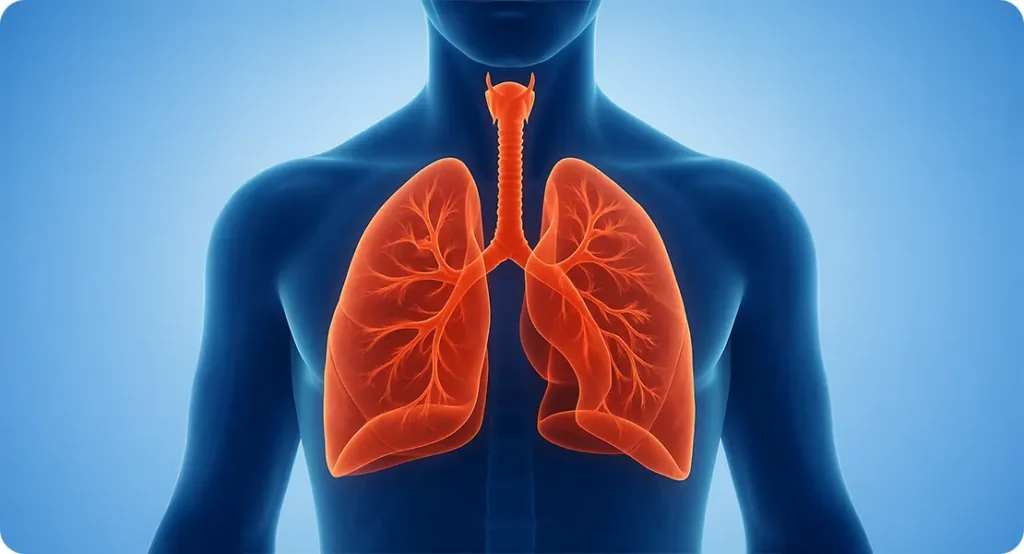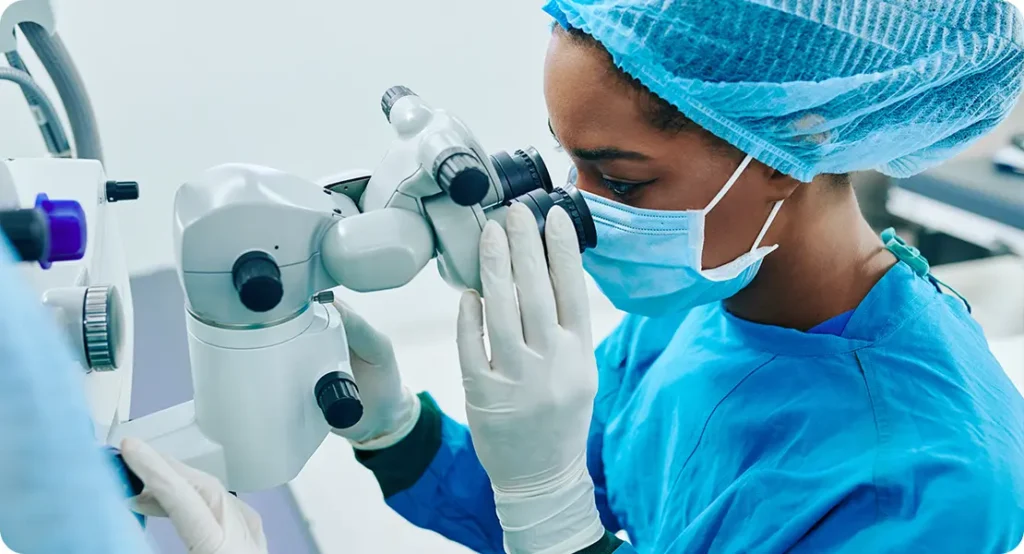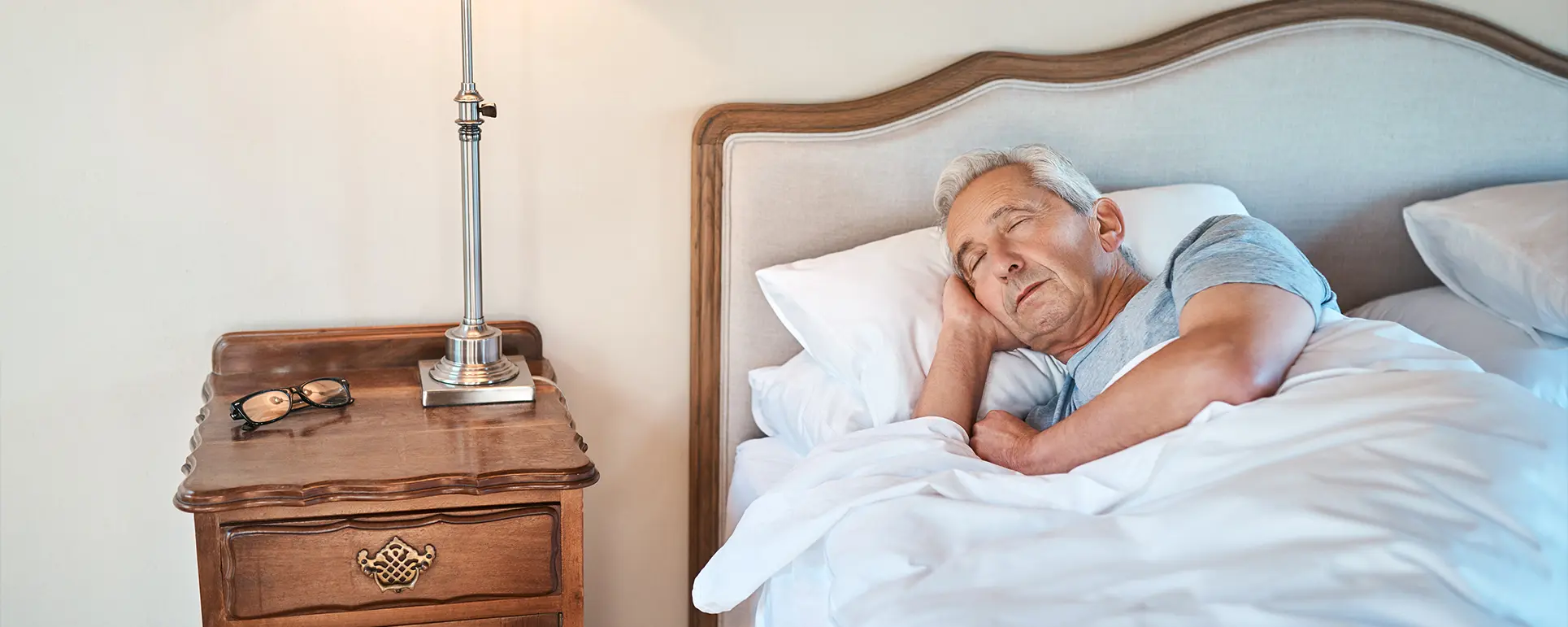When you think of cataracts, your mind probably goes straight to ageing, diabetes, or maybe too much time in the sun. But there’s a lesser-known, often overlooked culprit that might be quietly contributing to the clouding of your vision: your sleep. Or more precisely, your lack of oxygen while you sleep.
Sleep apnoea and nocturnal hypoxia—conditions that leave your brain and body gasping for air in the dead of night—aren’t just bad news for your heart and brain. Mounting research suggests they could also be accelerating the ageing of your eye’s lens, potentially leading to earlier or more aggressive cataract development. And if you’re already heading towards surgery, these issues can complicate your recovery too.
In this article, we’ll unpack the emerging science behind the link between oxygen deprivation at night and cataract formation, explore how sleep-disordered breathing can impact eye health more broadly, and outline the anaesthetic and postoperative considerations if you’re dealing with both conditions.
Let’s shine a little light on a murky topic.
Understanding Sleep Apnoea and Nocturnal Hypoxia
Sleep apnoea isn’t just snoring—it’s a serious condition where your breathing repeatedly stops and starts while you sleep. Obstructive Sleep Apnoea (OSA), the most common type, occurs when the muscles in the back of your throat fail to keep the airway open. These pauses can last from a few seconds to over a minute and can occur hundreds of times a night.
Nocturnal hypoxia is a broader term that refers to low oxygen levels in the blood during sleep. While most cases are due to apnoea, it can also happen with other respiratory or cardiovascular issues. The key here is the chronic lack of oxygen, which can strain every organ—including your eyes.
The longer your oxygen saturation remains low during sleep, the more physiological stress your tissues experience. And this cumulative oxidative stress can have consequences far beyond feeling groggy in the morning.
The Lens and Oxygen: What’s the Connection?

The lens in your eye is unique. It doesn’t have a direct blood supply, so it relies heavily on the surrounding fluids and a delicate metabolic balance to keep its proteins transparent and well-organised. This makes it particularly vulnerable to changes in oxygenation and oxidative stress.
When oxygen levels drop—like during apnoeic episodes—the body responds by generating reactive oxygen species (ROS). These unstable molecules wreak havoc on cellular components, including the crystalline proteins in the lens. Over time, this damage can lead to the misfolding and aggregation of these proteins, contributing to the development of cataracts.
In simpler terms: your lens doesn’t like being deprived of oxygen. And if that’s happening night after night, the damage can build up silently.
What the Research Says About Sleep Apnoea and Cataracts
While research in this area is still emerging, several studies are painting a clearer picture of the relationship between sleep apnoea and cataract formation.
A large-scale retrospective study from Taiwan found that people diagnosed with OSA had a significantly higher incidence of cataracts than those without it. This association remained even after adjusting for age, sex, diabetes, and other known risk factors. Other smaller studies have corroborated these findings, with many pointing towards oxidative stress as the likely mechanism.
It’s also worth noting that the risk seems to be dose-dependent. In other words, the more severe the apnoea (as measured by the Apnoea-Hypopnoea Index), the higher the likelihood of cataract formation. This suggests a clear biological gradient and supports the idea that oxygen deprivation during sleep isn’t just an incidental finding—it might be a contributing cause.
Types of Cataracts Linked to Sleep-Related Hypoxia
Not all cataracts are created equal. There are different types—nuclear, cortical, posterior subcapsular—and each has its own risk factors. So which one does sleep apnoea affect the most?
Emerging research suggests that nuclear sclerotic cataracts—those that form deep in the centre of the lens—may be particularly linked to chronic hypoxia. This type is typically associated with ageing and oxidative damage, both of which are intensified in the setting of untreated OSA.
There’s also some early data indicating that posterior subcapsular cataracts, which form at the back of the lens and affect reading vision, might be influenced by hypoxic stress, though more studies are needed to confirm this.
For now, the key takeaway is that chronic night-time oxygen dips can potentially influence more than one type of lens opacity, but the oxidative stress-linked nuclear cataracts appear to be the most consistently associated.
The Role of CPAP Therapy in Eye Protection
If you’ve been diagnosed with sleep apnoea, chances are you’ve heard of CPAP (Continuous Positive Airway Pressure) therapy. It’s the gold standard treatment and involves wearing a mask that keeps your airways open during sleep.
Interestingly, CPAP doesn’t just improve your sleep and reduce cardiovascular risk—it might also help protect your eyes. By maintaining stable oxygen levels, CPAP can reduce the oxidative burden on the lens and other eye tissues. Some early studies suggest that consistent use of CPAP may slow cataract progression, though more longitudinal research is needed.
If you’re already using CPAP and heading towards cataract surgery, it’s a good idea to keep your treatment consistent in the lead-up to surgery and during recovery. Your ophthalmologist should be aware of your sleep apnoea status so they can factor it into your perioperative care.
How Sleep Apnoea Can Affect Cataract Surgery
Sleep apnoea doesn’t just increase the risk of getting cataracts—it can also make the surgery itself more complex.
Here’s how:
1. Anaesthetic Risk
Patients with OSA are more sensitive to sedatives and anaesthetics, particularly those that relax the upper airway muscles. This can increase the risk of airway obstruction during the procedure, even if it’s being done under local anaesthesia with mild sedation.
For this reason, many eye surgeons will coordinate with anaesthetists to use the lightest possible sedative dose—or avoid sedation altogether if you’re comfortable. Some patients may be asked to bring their CPAP machine with them on the day of surgery.
2. Positioning Challenges
Cataract surgery typically requires you to lie flat and still for up to 20–30 minutes. For some OSA patients, especially those with severe cases or obesity-related airway compression, this can be uncomfortable or even risky. Being unable to lie flat without airway compromise can lead to intraoperative oxygen desaturation.
In such cases, minor positioning adjustments—like elevating the head slightly or using a nasal cannula for supplemental oxygen—can make a big difference.
3. Postoperative Monitoring
Because apnoeic episodes can occur even during short naps, some eye clinics may choose to monitor OSA patients more closely after surgery. This is especially important if you’ve had sedation, which can linger and increase the likelihood of apnoeic events in recovery.
Your care team might recommend someone accompany you home and keep an eye on you for the rest of the day—just as an added safety measure.
Inflammation and Healing: Why Hypoxia Matters After Surgery
You might assume that once the cataract is removed and the lens replaced, the job is done. But healing is a complex, dynamic process—and oxygen plays a vital role in it.
Postoperative inflammation is common in any eye surgery, and if you’re dealing with sleep-related hypoxia, your healing process might not be as smooth. Low oxygen levels impair tissue repair, delay epithelial recovery, and can even make you more susceptible to infections.
This means your ophthalmologist may recommend a more aggressive anti-inflammatory regimen or adjust your follow-up schedule to keep a closer eye on your progress. And if you’re not currently using CPAP or any oxygen-support therapy, it might be the right time to have a conversation with your GP or sleep specialist.

Other Ocular Conditions Linked to Sleep Apnoea
While cataracts are the main focus here, it’s worth knowing that sleep apnoea has been implicated in several other eye conditions:
- Glaucoma – particularly normal-tension glaucoma, possibly due to nocturnal spikes in intraocular pressure and reduced blood flow to the optic nerve.
- Floppy Eyelid Syndrome (FES) – commonly seen in OSA patients, leading to chronic irritation, redness, and mechanical ptosis.
- Non-arteritic Anterior Ischaemic Optic Neuropathy (NAION) – a vision-threatening condition linked to nocturnal hypoxia and vascular dysregulation.
If you’ve been diagnosed with OSA, it’s wise to get a comprehensive eye check-up—not just for cataracts, but for a full assessment of optic nerve health, intraocular pressure, and retinal function.
What You Should Tell Your Eye Surgeon
If you’re preparing for cataract surgery and have sleep apnoea (or suspect you might), don’t keep it to yourself. Let your ophthalmologist know:
- Your diagnosis and when it was made
- Whether you’re using CPAP or any other treatment
- Any known issues with sedation or general anaesthesia
- How well you tolerate lying flat
- Whether you’ve experienced recent drops in oxygen saturation
This information helps your surgeon and anaesthetist plan your care more safely and effectively. It’s not about complicating things—it’s about customising your care.
Taking Action: Next Steps for Patients with OSA and Cataracts
So, what should you do if you suspect sleep apnoea and also have early cataracts?
- Speak to your GP about a sleep study referral if you haven’t been formally diagnosed.
- Maintain consistent CPAP usage if prescribed—don’t slack in the months before surgery.
- Get regular eye exams, particularly if you have other risk factors like diabetes or hypertension.
- Tell your surgeon everything about your sleep condition, even if it seems irrelevant.
- Ask questions—about sedation options, postoperative monitoring, and whether your CPAP can be used during recovery.
A little planning now can help avoid complications later.
Frequently Asked Questions (FAQs)
- Can sleep apnoea directly cause cataracts, or is it just a risk factor?
Sleep apnoea is considered a risk factor rather than a direct cause of cataracts. The condition contributes to oxidative stress due to intermittent hypoxia, which can accelerate the degeneration of lens proteins. Over time, this increases the likelihood of cataract development, particularly nuclear sclerotic types. While sleep apnoea doesn’t guarantee you’ll get cataracts, it certainly raises the odds—especially if left untreated. - Does treating sleep apnoea with CPAP reduce the risk of cataracts?
Although there is no conclusive evidence that CPAP treatment reverses cataract formation, early studies suggest it may slow the progression by stabilising oxygen levels and reducing oxidative stress. CPAP can also improve general vascular and metabolic health, which indirectly supports better ocular health. For patients undergoing cataract surgery, continued use of CPAP before and after the procedure may enhance recovery and reduce complications. - Should I mention sleep apnoea to my cataract surgeon even if I’m not using CPAP?
Yes, absolutely. Even if your sleep apnoea is undiagnosed or you’re not currently on CPAP, it’s important to tell your surgeon. It influences how your sedation and oxygen monitoring are managed during surgery. It also helps anticipate recovery challenges and tailor your care appropriately. Any history of nocturnal oxygen desaturation is medically relevant and should be disclosed. - How do I know if I have sleep apnoea if I’ve never been tested?
Common signs include loud snoring, choking or gasping during sleep, excessive daytime sleepiness, morning headaches, and difficulty concentrating. If you have any of these symptoms, especially alongside known cataracts, speak to your GP about undergoing a sleep study. Early diagnosis and treatment could not only improve your quality of life but potentially protect your eye health as well. - Can sleep apnoea make cataract surgery more dangerous?
While cataract surgery is generally very safe, sleep apnoea can introduce additional anaesthetic and positioning risks. The main concerns involve airway collapse during sedation, oxygen desaturation, and postoperative breathing issues. However, with proper communication and planning, most risks can be managed effectively. Clinics may adjust sedative doses, use supplemental oxygen, or keep patients upright post-procedure to mitigate these concerns.
Final Thoughts
Sleep apnoea and nocturnal hypoxia are more than just nightly nuisances. They affect your whole body—including your eyes. While we often think of cataracts as inevitable parts of ageing, it’s clear that what happens during your sleep plays a role in how fast that ageing process unfolds.
If you’re living with sleep apnoea and are considering cataract surgery—or just want to protect your vision longer—it’s worth addressing your sleep health now. Because when your body doesn’t get enough oxygen, your eyes are some of the first to feel it.
And if you’re looking to explore your options for private cataract surgery in London, now is the perfect time to speak to a specialist who understands how your general health and eye health intersect.
References
- Lin, P.W., Friedman, M., Chang, H.W. and Pulver, T.M., 2011. The association of cataract development and obstructive sleep apnea: results from a population-based study. Eye, 25(9), pp.1141–1145.
Available at: https://www.nature.com/articles/eye201127 - Wang, H., Lin, H.C. and Kang, J.H., 2013. Association between obstructive sleep apnoea and the risk of cataract: a nationwide population-based study. Eye, 27(9), pp.1066–1070.
Available at: https://www.nature.com/articles/eye201361 - Khandgave, T.M., Ambati, B.K. and Ford, G.D., 2015. Hypoxia and oxidative stress: The possible link between sleep apnoea and cataract formation. Journal of Cataract & Refractive Surgery, 41(12), pp.2597–2599.
Available at: https://doi.org/10.1016/j.jcrs.2015.10.020 - McMillan, G.W., 2022. Ocular implications of obstructive sleep apnoea: what ophthalmologists need to know. British Journal of Ophthalmology, 106(4), pp.499–504.
- Shneerson, J.M., 2005. CPAP treatment for obstructive sleep apnoea: impact on quality of life and comorbid conditions. BMJ, 330(7502), pp.70–71.

